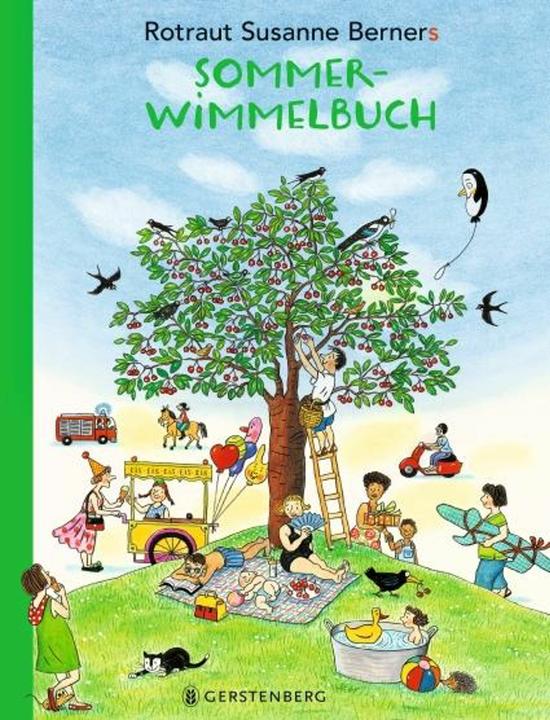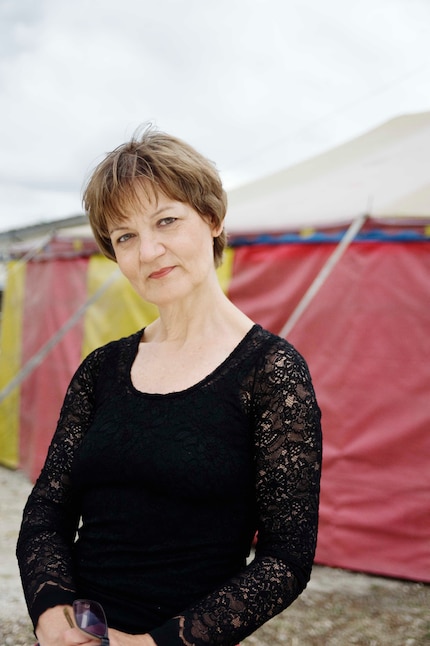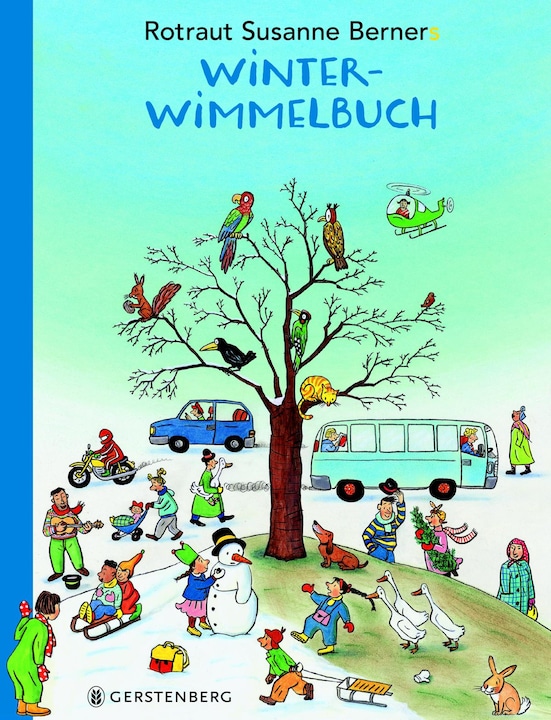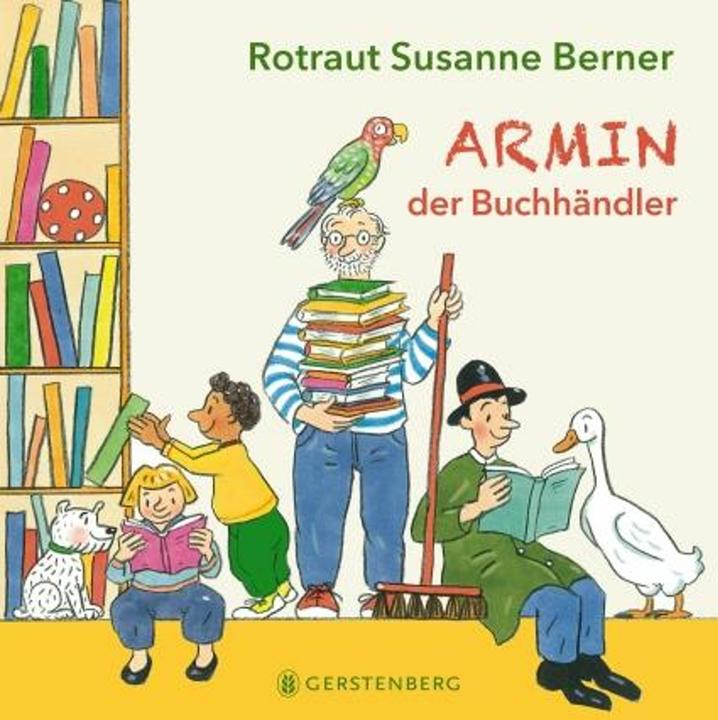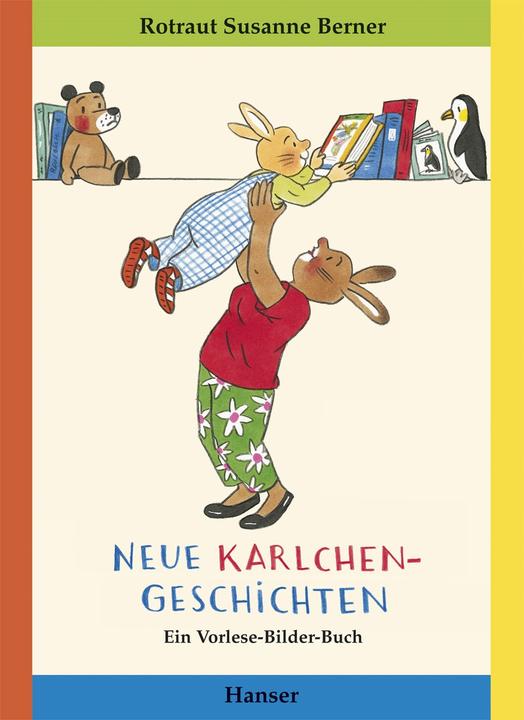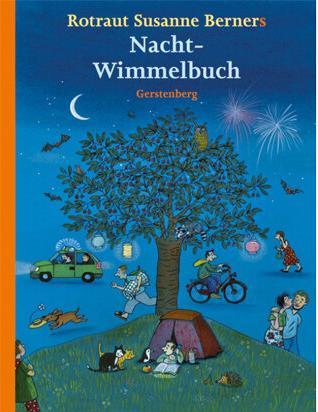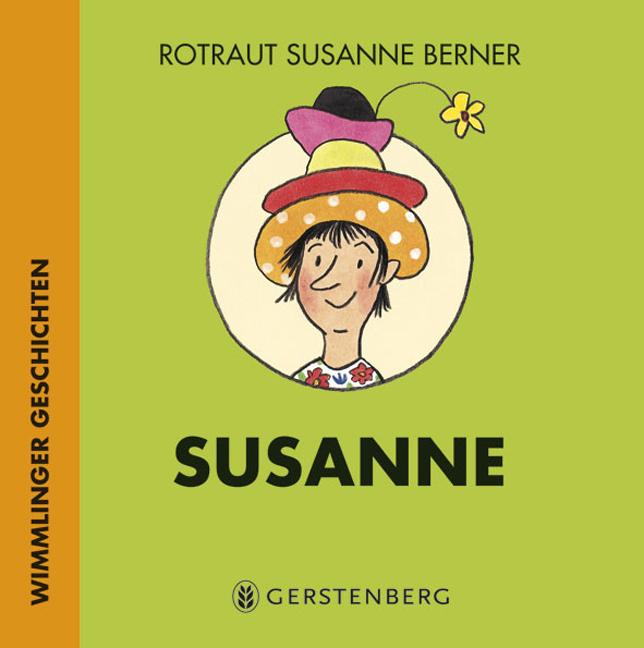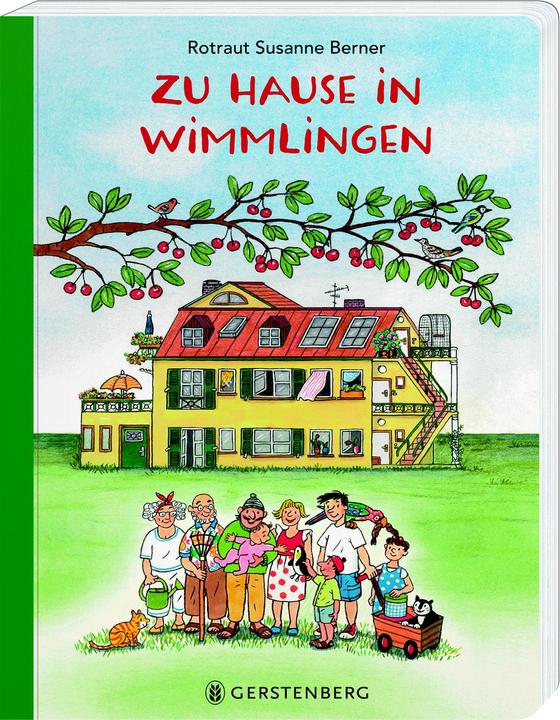

She didn't want to make hidden object books, now she owns the genre
It's hard to imagine a child's bedroom without Rotraut Susanne Berner's hidden object books. In this interview, she explains why this was never the plan, why bookseller Armin looks like her husband and what a good Wimmel cosmos has to do with a film script.
My children are lying on their stomachs on the floor with Rotraut Susanne Berner's large-format hidden object books in front of them. I love watching them sink into these colourful pictures. Sometimes I sink into them myself. Then we watch together as the kittens get bigger, the parrot takes off and the kindergarten is completed. We discover new details every time we look at them - even for the hundredth time.
Hidden object pictures are illustrations with countless figures, scenes and little stories. Rotraut Susanne Berner didn't invent them - but she took them a step further: she knitted several such hidden object pictures together to create a large narrative. Over several pages and volumes. With the village of Wimmlingen and 80 recurring characters, she has created a world that makes her one of the most successful children's book authors of our time.
Her seasons of the year colourful books can be found in almost every child's bedroom, or so they say. 6.5 million copies have been sold and translated into 30 languages. How does that feel?
Rotraut Susanne Berner: It's bizarre when I realise that. I often ask myself how that came about. Only a few illustrators and authors create classics. And it happened to me. That is a great stroke of luck, for which I am very grateful.
You are currently working on a new book for the series, «Christmas in Wimmlingen». Now of all times, when everything is in bloom outside ...
Yes, I'm sitting here in late spring and letting it snow.
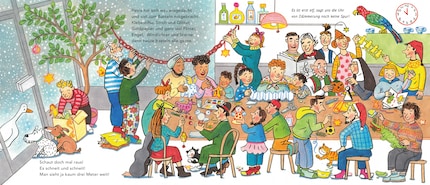
Source: Gerstenberg
You already illustrated your very first Wimmelbuch, the winter book, in summer.
That was in the summer of 2003, one of the hottest summers ever! Every time I looked up from my winter pictures, I thought: «Where am I?» That was crazy.
Are you listening to Christmas music?
No, on the contrary. I consciously take breaks on my little terrace and enjoy the warm season.
The winter book was published 22 years ago. What is it like for you to continue the story of Wimmlingen over such a long period of time? Above all, is it nice to let the characters live on - or would you like to bring the story to a close?Both is the case. These characters came out of me: I like them and they are familiar to me. Of course, I'm also interested in keeping the cosmos of wimmlings alive for pragmatic reasons. It's how I earn my money. On the other hand, it's important for me to do something completely different in between. For example, I have just illustrated a book about human rights for young adults. After that, I like to devote myself to Wimmlingen again.
Do you have any favourite characters?
The bookseller Armin is particularly close to my heart. I modelled him on my husband, who died in 2012. He looks exactly the same and will also play a role in the Christmas book.
Do you let your husband live on a bit like this?
Yes, although he still lives very much with me anyway. I live in the flat we share and am surrounded by his things. I work in the same shop where he used to exhibit illustrations. I've given his estate to the German Book and Writing Museum in Leipzig, along with my originals. So we are a bit together again.
Do you appear in Wimmlingen yourself?
I am represented in various characters, most likely in Susanne. What she has in common with me is that she constantly loses her hats and caps.
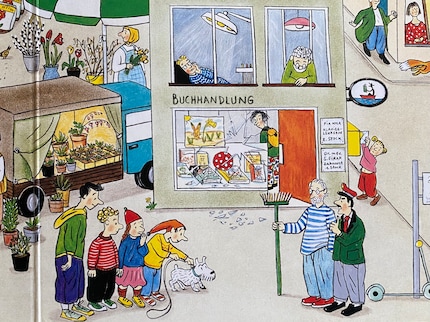
I have to admit that I'm a big fan of your hidden object books myself. I often don't like hidden object pictures because they are too hectic for me ...
I myself resisted Edmund Jacoby - my publisher at Gerstenberg at the time - for a long time, who kept pestering me to make hidden object books. That's not really my thing. I don't like working on such a small scale and in such an elaborate way. When I decided to take part anyway, I wanted to do it in a different, new way.
How then?
My hidden object books are actually one big story. The characters meet, argue, have children. The «father of hidden object books» Ali Mitgutsch never mentions the time factor. You can lose yourself in his pictures. But the fact that as a reader you feel like you're on a stage where something is happening all the time was unheard of before. Many have since imitated this. It was new back then.
This literary storytelling in childlike, vivid images: Is that your recipe for success?
I have to say that the success only materialised once all the seasons books had been published. The first two books didn't do well at all. People were worried that a book without text wouldn't teach the children anything. My idea was that children should be able to look at the books independently. I can see them lying on their tummies, completely absorbed in the pictures. The very little ones point to them and say: cat, car, stork. As they get older, they realise that something is being told and they compare the seasons and times of day.
With so many characters, how do you keep track of everything that happens on one page and then in the different volumes as a whole?I started very naively with the first volume. But I quickly switched to a systematic approach. I write a script before each book, like a film: who acts with whom, what happens when. I wrote down on lists what clothes the characters wear, where they live, who knows whom. The main focus is on the road that runs through the books. In winter, the bus drives along it from page to page, in spring the rubbish lorry. What happens in the background - whether it's a woman walking or a thief sneaking through the picture - comes to me spontaneously as I draw.

My child recently asked me where the trains leave the station. They take the liberty of not paying too much attention to proportions and perspectives. Why?
There are a lot of illogical things in the pictures, that's probably true. In terms of perspective, I don't get much right. The images are interlaced like on a theatre stage. I didn't want too much overlap to ensure legibility.
Have your style and drawing technique always been the same?
In the Wimmel books and also in my «Karlchen» books, yes: my characters are all outlined and coloured in. This is a traditional form of illustration. I use pastel and gouache colours as well as coloured pencils. Making sure that all the characters still look the same after 20 years is a fine piece of craftsmanship and not at all easy. You continue to develop and change your strokes. You can see that a little in the books. But if the target audience isn't small children, I also use completely different techniques.
In an interview, you mentioned Walter Trier as your role model. He illustrated all of Erich Kästner's books. To what extent did he inspire you?
Walter Trier drew his characters with a certain distance, but always with a loving eye. I really like that. He was a brilliant draughtsman and also a great role model as a person. He made political statements against the Nazi dictatorship in caricatures. A thoroughly likeable artist and person. I had the Kästner books at home as a child: my father was a publisher and made sure that I read «good» books, not comics, for example. But of course I did that too.
People in wheelchairs and with different skin colours appear in your hidden object books. How important is diversity to you in your children's books?
Oh, there have been criticisms from all sides. Some think that too few ethnicities are represented, but that the rubbish drivers shouldn't have a migrant background. Others ask why there has to be a black woman and one with a headscarf. I want to portray reality as it is. Yes, and that includes a wheelchair user. Fortunately. When I was a child, you hardly ever saw one on the street because almost nothing was barrier-free. I didn't manage to do it perfectly. There is no blind person, for example. You could list other shortcomings if you wanted to.
You grew up in southern Germany and said in an interview that you modelled Wimmlingen on a place in this region from the 1950s and 1960s. Do you remember your childhood as being as idyllic as Wimmlingen?
Yes, I remember it as a harmonious time. I grew up in the countryside near Stuttgart for the first few years. The road was my playground, there were hardly any cars back then. My grandparents worked as farmers. We hiked a lot and sang. From my perspective today, however, it was a false idyll. When you think about how recent the horrors of war were.
Even today, the world situation is shaky in many places. Wimmlingen is a small town where all seems well with the world. Is that the kind of world you would like to see?
My books are less political or ideological. I don't want to show two-year-olds the world in all its awfulness. I concentrate on things that children recognise in their everyday lives: the cat, the dog, the car, the tree and the digger. Some things are also fairytale-like, for example Oskar with the goose. A mysterious figure that nobody knows anything about.
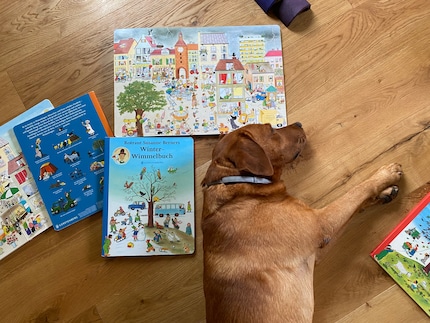
How has success changed your life and your work?
I was happy for many years, but didn't earn much and lived with an overdraft. Fortunately, that has changed. If you don't have economic worries, you live a more relaxed life. In that sense, I no longer need to write books. I'll be 77 this year and I'm often asked: «Why are you doing this to yourself? Why don't you give it a rest and enjoy life!» But I still really enjoy working. When young adults thank me because they grew up with my books, it touches me. At the same time, it makes me realise how time flies. As I don't have any children of my own that I can see growing up, I don't usually realise this.
I'm really a journalist, but in recent years I've also been working more and more as a pound cake baker, family dog trainer and expert on diggers. My heart melts when I see my children laugh with tears of joy as they fall asleep blissfully next to each other in the evening. They give me inspiration to write every day - they've also shown me the difference between a wheel loader, an asphalt paver and a bulldozer.
Interesting facts about products, behind-the-scenes looks at manufacturers and deep-dives on interesting people.
Show allThese articles might also interest you

Background information
Sabrina Müller: A craft book author talks about life as a mum
by Ramon Schneider
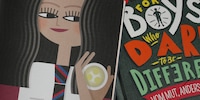
Background information
7 successful products invented by children
by Michael Restin

Background information
90 years of Globi: These are the things you probably don't know about the cult figure yet
by Katja Fischer
